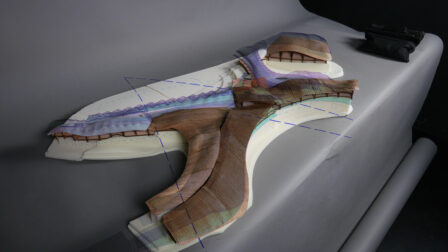Ali Yerdel
Long term residency
January 2016 – May 2018

Ali Yerdel, Ankara, 1988
Ali Yerdel is an Interior Architect who is an expert on new prototyping methods, parametrization and generative algoriythms for architectural,spatial and user related applications and an experimentalist who is interested in robotic endeffectors and machines to accumulate new fabrication methodologies. He finished his bachelor degree in Fine Arts faculty, Interior Architecture and Environmental Design, Bilkent University in Ankara 2010. After working for 2 years in Istanbul, he moved to Barcelona and finished his first masters degree at Institute of Advanced Architecture of Catalunya (IAAC). In the studio “Digital Tectonics / Fabrication Ecologies Studio”. Their project earned Experimental Robotic Craft Award. In the project Stigmergic Fibers, he introduces KUKA robot, the modern techniques of applying age-old materials to create emergent morphologies that transcend traditional processes. Afterwards, he did a thesis project in IAAC / Open Thesis Fabrication on “Sonic Environment frequencies parametrization and digital fabric form works, Orchestra of frequencies”. Recently, he finished another masters degree in “Advanced Design and Digital Architecture”, Elisava, Universidad Pompeu Fabra. There, he developed a proliferated pneumatic system that can be controlled through digital inputs where it led to a project about kinetic motion through manipulation of inputs.
The projects he will be working on while his residency in hangar are to activate certain open systems and sustainable cycles to create a catalogue of construction systems and energy efficient habitations for the people whom are in need of a habitation or a product and can use their surrounding materials to build it. The static conditions become kinetic by embedding a digital code and by giving a variety of options according to their uses. And when the need is finished, it can fold back into its own shell or decide to harvest more energy, so it can flourish another time when it is needed. This new family of creatures will be the new machines which interact with the user itself to learn and fit into conditions. A new translucent relationship emerges from this interaction. To understand how a habitat or a structure that can respond to a certain condition, can collect data and teach us patterns and loops according to their limit of actions. How will they respond to the user and how the user will be able to recognise it through their own needs.
